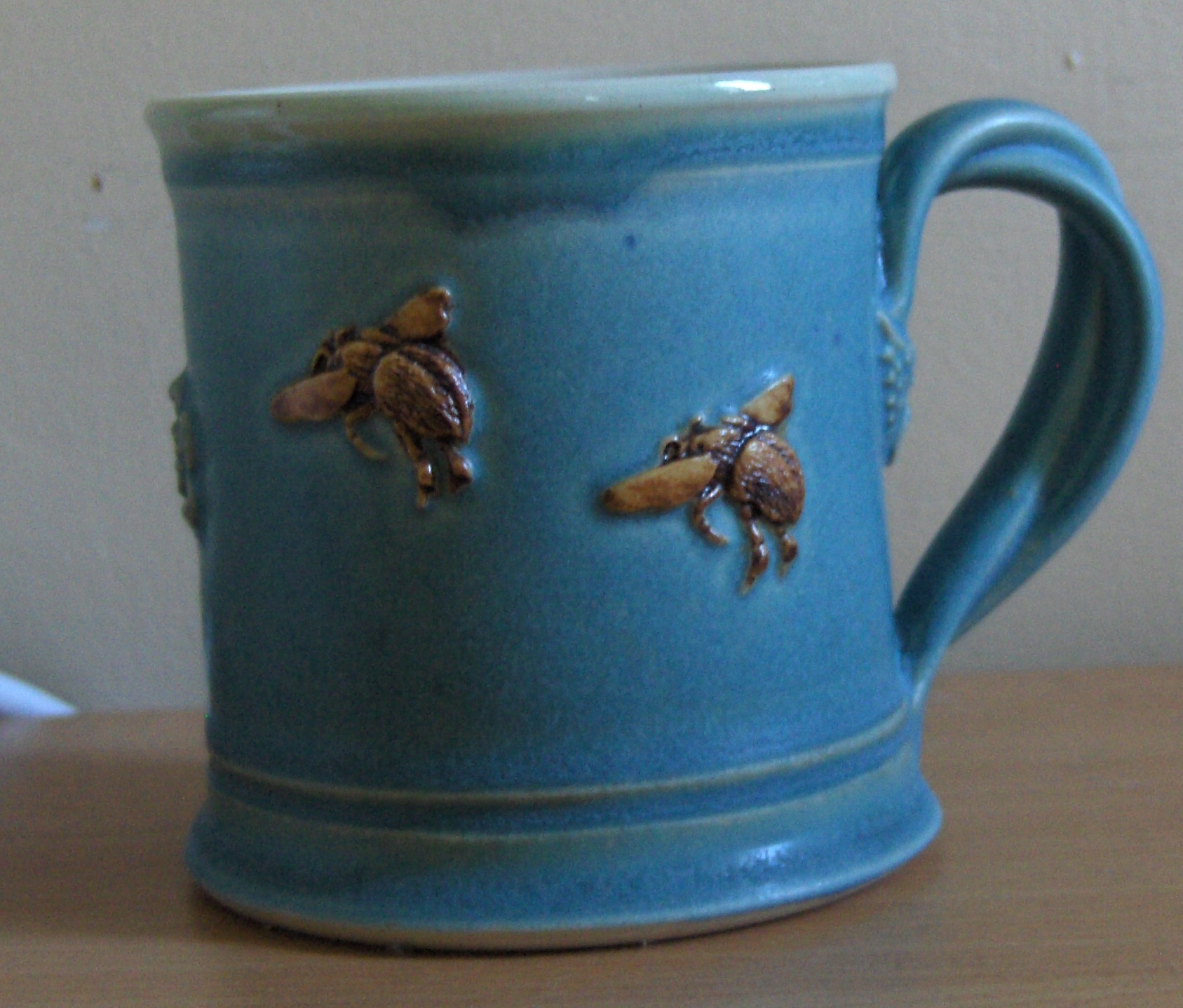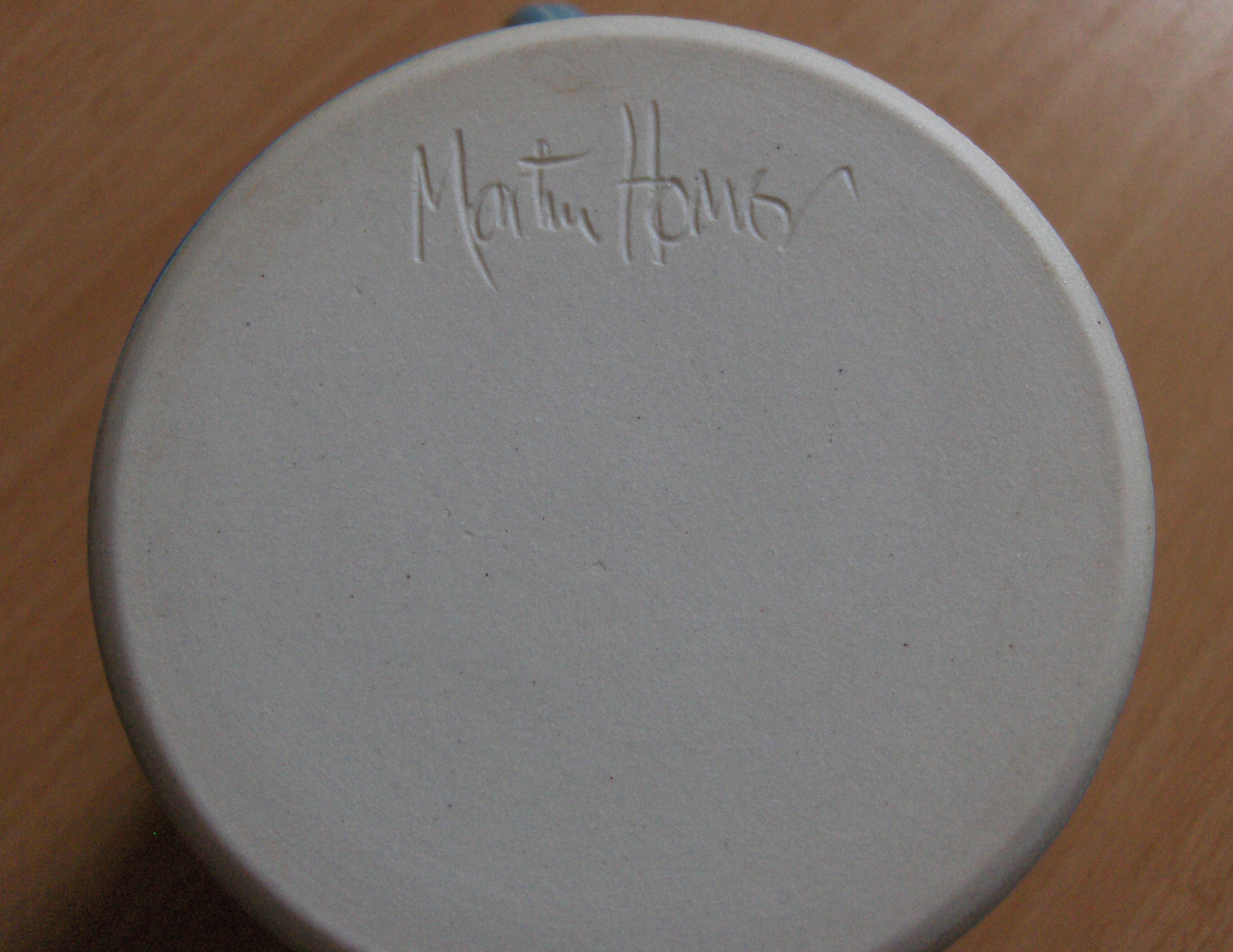Above: stoneware mug by Ludlow potter Martin Homer, signed on the base by the artist
At a seminar last week organised by the Material Culture Lab in the department of Archaeology in Cambridge, four speakers offered some thoughts on what ‘material culture’ means in their discipline. Amongst them was classicist Robin Osborne, who mentioned his recent work on artists’ signatures on statues, vases, and other objects. I tracked down his article, ‘The Art of Signing in Ancient Greece’ (Arethusa 43 (2010), 231-51), in which he offers a window onto some ancient Greek material texts. Lately I have been thinking a lot about the title-pages of early modern printed books, and found Osborne’s articulation of the ways in which writing itself ‘attracts writing’ (p. 243), as well as his discussion of what the relative size and position of artists’ names and other texts on Acropolis column dedications, gravestones, and drinking cups might tell us about the interactions between the various agents involved in their production, to be surprisingly pertinent.
Below: frontispiece and title-page of Alexander Pope’s translation of Homer’s Iliad


